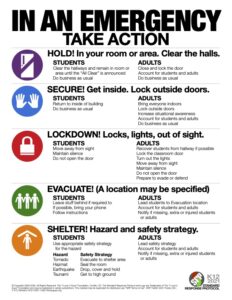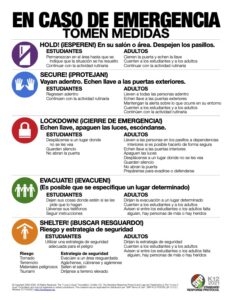Schools are among the safest places in the United States and at the Jordan School District we take safety very seriously. Keeping our students, employees, and visitors safe is our top priority each and every day. We proactively work in partnership with the cities our schools reside in through open and continuous communication with city officials, police, and fire agencies. We also regularly collaborate with state officials as well as other school districts throughout the state. We strive to ensure we have the most up-to-date safety standards and trainings implemented.
The Jordan School District utilizes the Standard Response Protocol (SRP) developed by the "I Love U Guys" Foundation based on data-driven research, experiences, and up-to-date practices. This system implements a uniformed, planned, and practiced response to any incident that may occur. It is action-based, flexible, and easy to learn with that use of clear and consistent language shared throughout the State of Utah.


